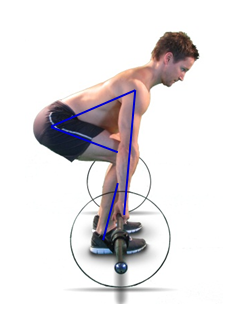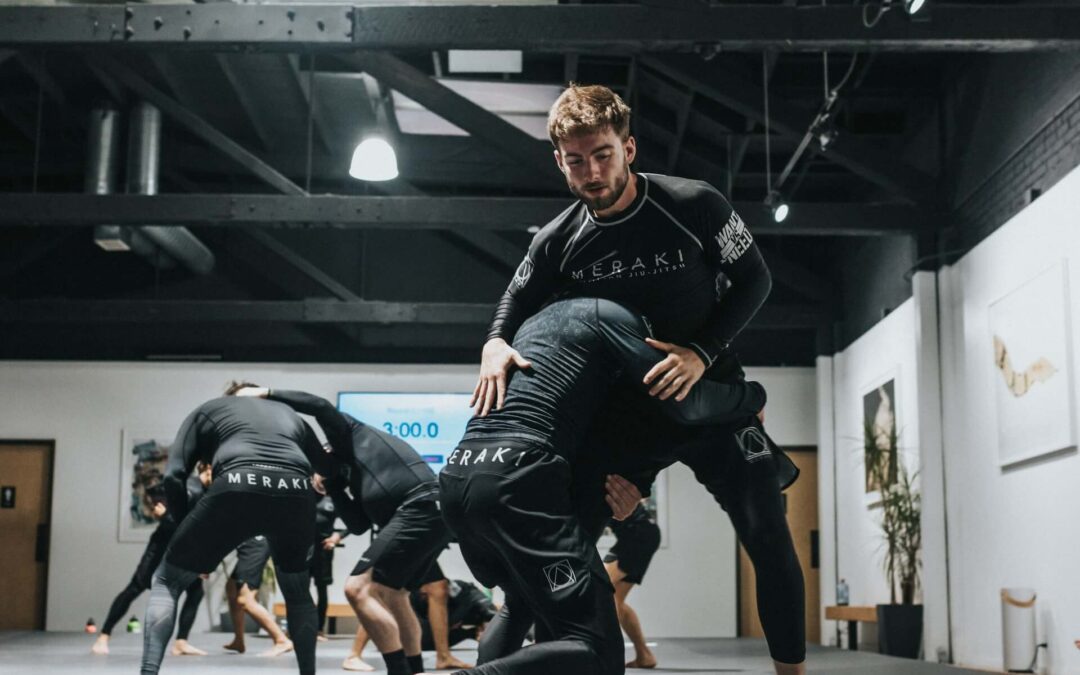If you’re human, you’ll often experience body aches and pains. If you’re an athlete, bad posture equals good posture in sports such as mixed martial arts (MMA), boxing, and other combat sports. The traps are overworked to keep the shoulders high, the pecs are tight, shoulders are rounded forward to protect the face and chin, the upper back is hunched over, and the head is forward. If you’re a professional computer user, you may exhibit similar posture issues.
There’s a decent number of Strength and Conditioning coaches and trainers who, when it comes to MMA, employ rather archaic methods. They often favor a plethora of old-school, masculine-type movements involving activities like tyre-flipping, slamming tyres, crossfit, strongman, kegs, sandbags, sleds, and more. While these exercises are undeniably fun and exhilarating, and I occasionally incorporate them into my own training regimen, the execution is not always conducive to maintaining proper form or loading the body in a manner where the bones are stacked as they should be.
Consider this scenario: an MMA athlete may already suffer from a locked-up thoracic spine, biceps tendonitis, and excessive forward head posture. Despite these issues, they’re instructed to hoist an 80kg sandbag over their shoulder and trek around with it for a while! While there is certainly merit to such exercises, it’s imperative to assess the individual athlete and determine whether they will genuinely enhance their competitive edge or merely exacerbate existing bodily strains.
MMA is undeniably a physically demanding sport. With rigorous skills training conducted on the mat, athletes subject their bodies to constant wear and tear, making the preservation of joint health a paramount concern. While increasing size and strength remains a secondary objective, it’s crucial to acknowledge that this approach may not sit well with individuals eager to engage in primal, visually appealing crossfit and strongman conditioning routines, complete with a plethora of slamming, throwing, and hammering activities.
However, the reality is that, like any other athlete or client, these individuals should undergo thorough screening and assessment. Care must be taken to understand and respect the current state of their bodies, ensuring that training programs are tailored to promote overall health and longevity, rather than exacerbating existing injuries or vulnerabilities.
Typical Problem Areas
Thoracic Spine
This area is critically important because, once again, in MMA, what may seem like bad posture is actually good posture for the sport. Shoulder issues often arise from insufficient movement in the thoracic spine, leading to abnormal scapular movement and improper shoulder mobility. It’s not uncommon to encounter MMA athletes with compromised shoulders and necks, conditions that can prematurely end their fighting careers if not addressed. Therefore, the primary focus should be on achieving an optimal posture when NOT training: lifting the chest, retracting the shoulders, and aligning the neck with the spine. Failing to do so subjects the joints to continuous stress from shear forces.
Lower Back
MMA athletes consistently maintain back flexion, with their backs often rounded out whether they’re on top or underneath their opponent. It’s essential to assess athletes for any lower back issues, such as disc bulges, especially if they experience pain.
There’s an ongoing debate among Strength Coaches and Trainers regarding whether to incorporate lower back flexion exercises into the training regimen of MMA athletes, such as crunches, sit-ups, hanging leg raises, standing cable crunches, and rounded-back submaximal lifting (like light deadlifts that allow the back to round). Some coaches argue that athletes require strength in this position and should train accordingly, while others believe that since athletes are already in flexion throughout their technical training, additional strength training in this manner should be avoided at all costs.
For further insight into this topic, I’ve written a post that delves deeper into the discussion, which you can read here: Core On Crunches.
Hips
Look for asymmetries in the hips. The athlete’s kicking leg will likely exhibit more internal rotation, and their hips may be rotated away from the side of their forward stance leg. If they engage in heavy gym training, focusing on maximal squatting and deadlifting, for example, they are subjecting their body to uneven loading with extremely high forces, which can ultimately lead to injury.
This list is not exhaustive, but it provides a general overview of the sport-related issues that combat sport athletes may encounter.
Tips for Making a More Powerful and Effective Fighter

Firstly, invest in professional advice for personalized assessment to identify any underlying issues with their body. They will likely require extensive soft tissue work on the upper back and release of muscle tightness around the chest area, along with corrective mobilizations and stretches. Emphasize maintaining good posture when not training and incorporate corrective exercise drills into warm-ups to maximize benefits.
In the gym, they will likely benefit from substantial strength work targeting the upper and lower back, glutes, and hamstrings. Their Strength and Conditioning training should resemble that of any other athlete, with adjustments made to tailor it to their specific sport, particularly considering the energy systems involved in a fight.
The goal should be to enhance athletes’ strength while maintaining good joint integrity, as this is crucial for their longevity in the sport.
